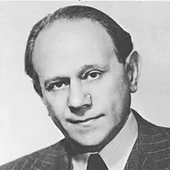
Karol Rathaus
Rathaus, with his individual compositional style, is one of the most interesting composers of the exile generation who has increasingly gained attention in recent years * Established a reputation as opera and ballet composer (Der letzte Pierrot, Fremde Erde, Le Lion Amoureux) * Rhythmic variety, daring harmony, and East European influences are distinctive of his works * Artistically, Rathaus cut his own path by neither following the late romantic traditions nor joining the Second Viennese School movement * Studied with Franz Schreker, to whom he owes his affinity for the opera, in Vienna, then Berlin * Made his breakthrough as a composer with his Second Symphony and his ballet Der letzte Pierrot * Was regarded as one of the most established film composers in Germany in the early 1930s * In the Third Reich, his works were banned from public performances * Rathaus left Berlin in 1933, lived in Paris and London for a few years, and eventually immigrated to the U.S. in 1938 * Accepted the chair of professor for composition at Queens College New York in 1940 * During the years of exile, Rathaus extended his oeuvre with large-sized works such as Louisville Prelude, Vision dramatique, and his Third Symphony * Many of his late works were published by Boosey & Hawkes
Works by Karol Rathaus include:
Le Lion Amoureux op.42b (1937) Ballet-Suite for Orchestra
Prelude for Orchestra (Louisville Prelude) op.71 (1953)
Gallant Serenade (1948) Woodwind Quintet
"One of the strongest hopes of our new music" — Walter Schrenk
